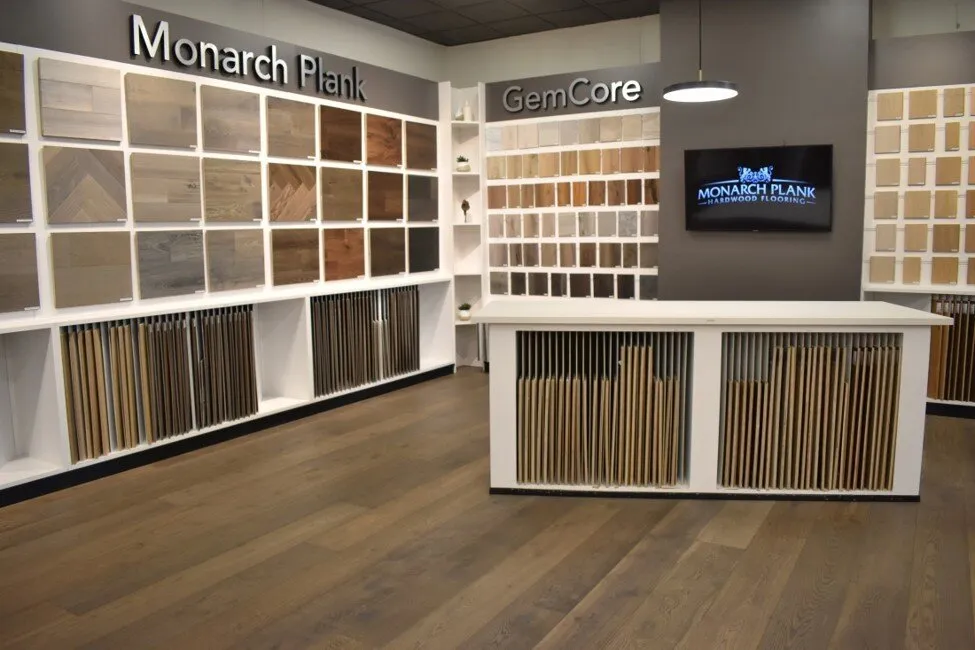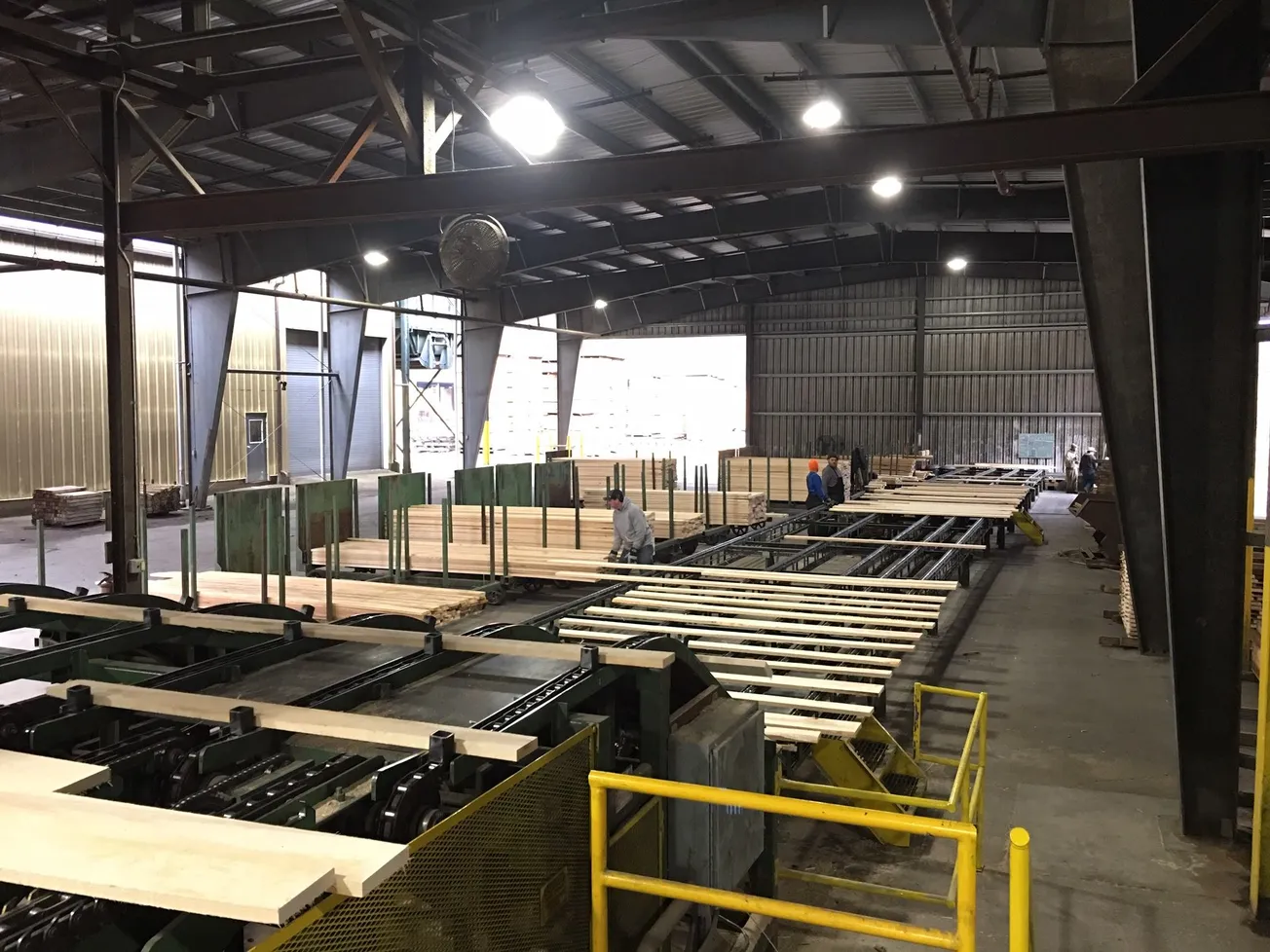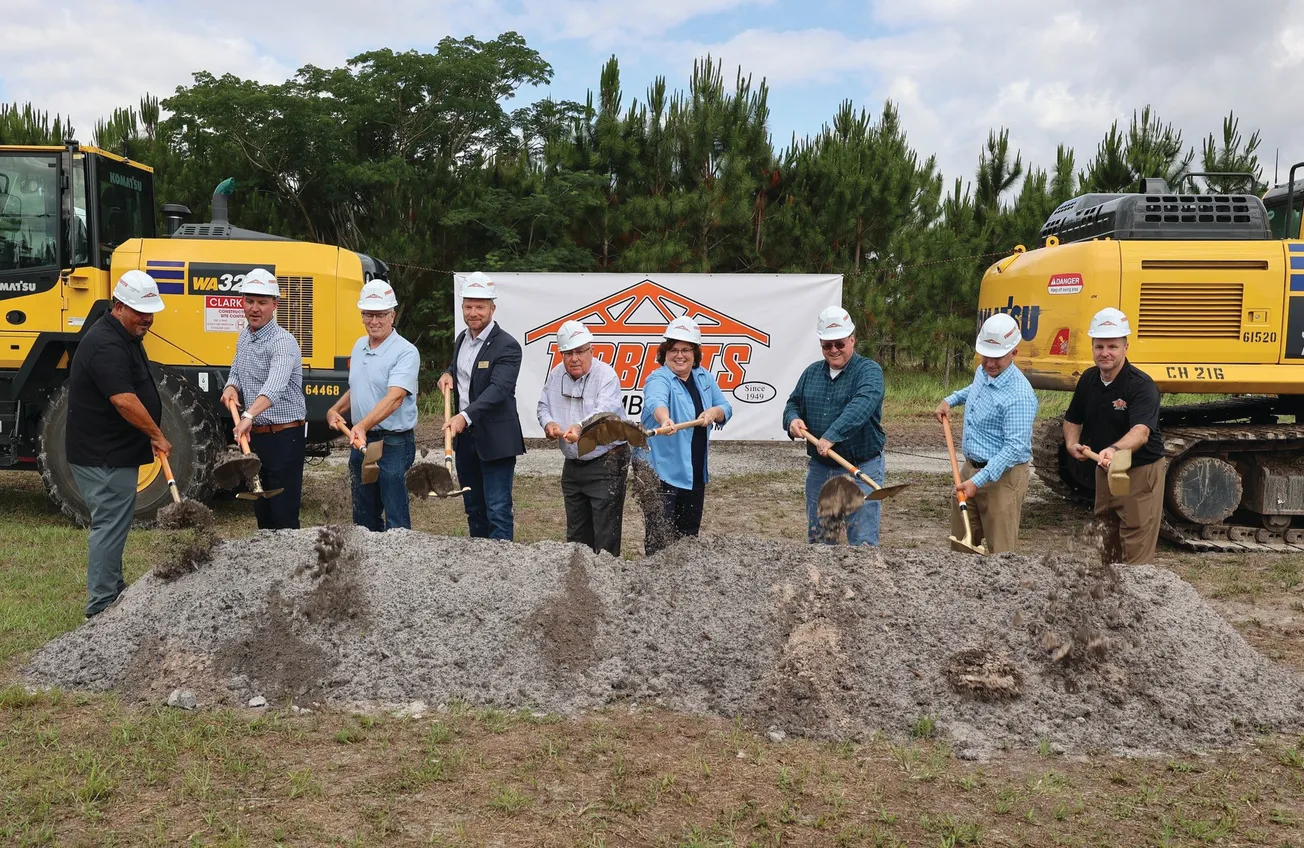Table of Contents
A storied millwork company in Northern California has carved its niche by building authentic architectural reproductions and by helping to rebuild lives. Its latest project, a recreation of Abraham Lincoln’s hearse that was featured this month during a sesquicentennial reenactment, accomplished both.
Blue Ox Millworks, Eureka, Ca., was launched as a logging company in 1973 by Eric Hollenbeck and three partners, who borrowed $300 to purchase a used chainsaw, a set of chokers, half a tank of gas, and a little blue truck. As recession hit and other area mills began to close, Hollenbeck expanded into manufacturing, initially specializing in prefabricated sheds and fence posts. He also began salvaging the antique equipment of the mills that closed, to construct his own Victorian era mill, both to preserve the art for future generations and to cut up his logs. Adding a 1905 Orton single-sided planer allowed him to mill quality finished lumber and eventually began specializing in historic recreations and other custom millwork.
In time, as more old tools and machinery were added, Hollenbeck looked for more ways to showcase them. In 1991, Blue Ox opened its doors to tours and eventually grew to show off other trades of the Victorian era, including blacksmithing, ceramics, plaster and printing. They later added workshops for groups to learn how to work the trades and Craftsman’s Days for craftsmen from around the world to show off their wares in a festival setting.
Blue Ox began hosting area students in 1989 by partnering with the Humboldt Office of Education. Ten years later, a full-time high school was added, where at-risk students could spend three days a week in a regular classroom setting and the other two days at the Ox, learning millworking, carpentry or cabinet making. After four to six years, they graduate with a regular high school diploma and a valuable trade.
As a Vietnam veteran himself, Hollenbeck had worked for years to also add a school for returning veterans. He figured that providing opportunities for meaningful, hands-on craftsmanship could reintegrate and revive members of the military, helping them develop a new self-identity.
Unfortunately, he could not get the necessary approvals—until he was contacted by Jack Feathers, a fellow veteran and hearse craftsman in Tombstone, Az., who had agreed to recreate the historic transport for a special event May 1-3, 2015, in Springfield, Il., to honor the 150th anniversary of Lincoln’s cross-country funeral procession.
Feathers quickly realized the project was too big for him and found Blue Ox in an online search. “Two things,” Feathers cautioned Hollenbeck. “First off, it can’t be done and, second, there’s no money in it.” Hollenbeck, though, figured the project might be high-profile enough to get his veterans’ school approved. He had his okay within a week.
While Feathers built the under-frame in Arizona and another veteran, Jay Jones, made the wheels, axles and spring in Kentucky, Hollenbeck recruited 12 veterans, primarily from Iraq and Afghanistan for his inaugural Blue Ox Veterans School. Paid by the GI Bill, they spent nine months building the wooden frame, chamber and ornamentation.
“The frame we built out of 2x and 3x Douglas fir,” Hollenbeck says. “I used Douglas fir, because it’s the athlete of the softwood industry, strong and tough. The vehicle is really big and really heavy. It weighs 3,000 to 3,500 lbs. and measures, tip to tip, about 18-1/2 ft. long. With the six horses, it extends 57 feet.
“It was way overbuilt. This is not a carriage. The wheels are 3” wide. The hubs are hickory, 10” in diameter, and weigh 45 lbs. each.”
Blue Ox recreated original molds for all the decorative details, which were cast in aluminum, then gold and silver leafed. “The patterns, including the arches in the windows, are built of redwood, because it’s the most stable wood on the planet,” he notes.
The exterior was skinned with 1/4” maple. “We had no way of knowing what the original veneer was,” Hollenbeck says. “We chose maple, because it sands up so nicely and takes a nice, bright finish.”
The entire project was built off of a single photograph. “The vehicle didn’t originate in Springfield,” Hollenbeck explains. “They didn’t have time to build one. The mayor of St. Louis contacted the mayor of Springfield and said they had the fanciest hearse in the country. They loaded it on a train, and the bill of lading mentioned an oversize charge for 56” diameter wheels. So we scaled everything from there.”
The project ended up costing close to $40,000. But several veterans who participated received something greater: a sense of peace and healing. Shared Andrew Olufsen: “My children’s children will be able to see this hearse and say, ‘My daddy worked on this.’”
A highlight is expected to be early this month, when Hollenbeck and all the participating veterans are flown to Springfield, expenses-paid, to be part of the festivities. “They will be honored as craftsmen, that will be the biggest healing,” Hollenbeck says.
And the veterans school will continue. He next hopes to put the veterans to work restoring two century-old horsedrawn Omnibus streetcars that will be put into service on San Francisco’s Fisherman’s Wharf route. He figures his biggest challenge will be continuing to find projects that don’t seem like a let down.
“After all,” he says, “we started by climbing Mount Everest.”









